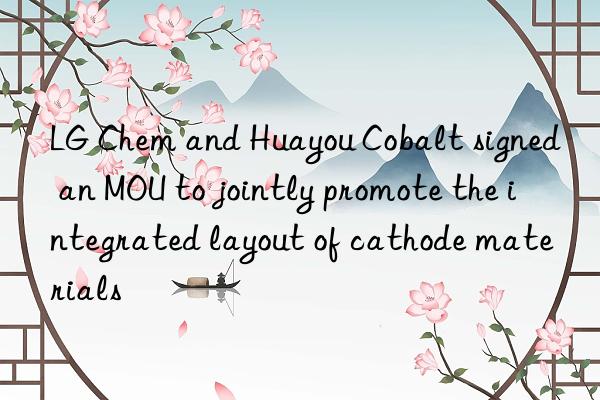
On September 22, LG Chem and Zhejiang Huayou Cobalt Co., Ltd. ("Huayou Cobalt") signed a memorandum of understanding on the cathode material supply chain. This cooperation aims to enter the phosphoric acid industry The lithium iron (LFP) cathode material market improves the resilience of the material supply chain. The two parties will set up an LFP cathode material factory and lithium conversion device in Morocco, and a nickel smelter and precursor factory in Indonesia.
In Morocco
LG Chem and Huayou Cobalt plan to build a joint venture factory in Morocco with an annual output of 50,000 tons of LFP cathode materials and achieve mass production in 2026.
LFP cathode materials are mainly used in popular electric vehicles. Although its energy density is lower than NCM (nickel, cobalt, manganese) cathode materials, its price advantage is obvious, so customer demand is on the rise. 50,000 tons of LFP cathode materials can produce the cathode materials required for 500,000 popular electric vehicles (based on an electric vehicle with a driving range of 350 kilometers and a capacity of 50kWh).
The Moroccan factory plans to produce LFP cathode materials for supply to North America. Morocco is a signatory to the U.S. Free Trade Agreement (FTA), and the cathode materials produced in the country meet the subsidy requirements of the U.S. Inflation Reduction Act (IRA). In the future, the two parties will adjust their shareholding ratios in accordance with the IRA "concerned foreign entities" regulations.
*Morocco is the country with the largest reserves of phosphate rock, the core raw material for LFP cathode materials, with 50 billion tons of phosphate rock reserves (accounting for 73% of global reserves).
LG Chem plans to officially enter the LFP cathode material market based on its Moroccan factory and expand its business territory to lithium iron manganese phosphate (LMFP)* cathode materials and other fields.
*Added manganese element on the basis of lithium iron phosphate, the energy density and output power are improved.
LG Chem will also jointly promote the lithium conversion device project in Morocco with Huayou Cobalt. The lithium conversion device is a device that extracts the lithium hydroxide and lithium carbonate required for the production of cathode materials from lithium concentrate (a high-purity mineral obtained after processing and concentrating lithium ore). By 2025, the Moroccan lithium conversion unit will build a lithium mass production system with an annual output of 52,000 tons and supply lithium to the Moroccan LFP plant.
In Indonesia
LG Chem and Huayou Cobalt will jointly build an integrated layout of cathode materials covering nickel smelting and precursors in Indonesia under the IRA Act.
*Indonesia ranks first in the world in terms of nickel reserves and production. The country is actively cultivating battery manufacturing and electric vehicle industries based on cost competitiveness. The country's nickel reserves are 21 million tons (accounting for 22% of global reserves), and its annual nickel production is 760,000 tons (accounting for 31% of global production).
The two parties are discussing the establishment of a precursor factory with an annual output of 50,000 tons in Indonesia. In order to further produce precursors, the two parties also plan to establish a smelting plant to extract nickel intermediates (MHP, Mixed) from nickel ores. Hydroxide Precipitate).
CEO Xin Xuezhe said: "LG Chem will actively respond to the emerging LFP cathode material market based on its cathode material factory in Morocco. At the same time, it will consolidate the integrated layout of cathode materials from raw materials to precursors and consolidate the foundation of the world's leading comprehensive battery materials company."

 微信扫一扫打赏
微信扫一扫打赏

